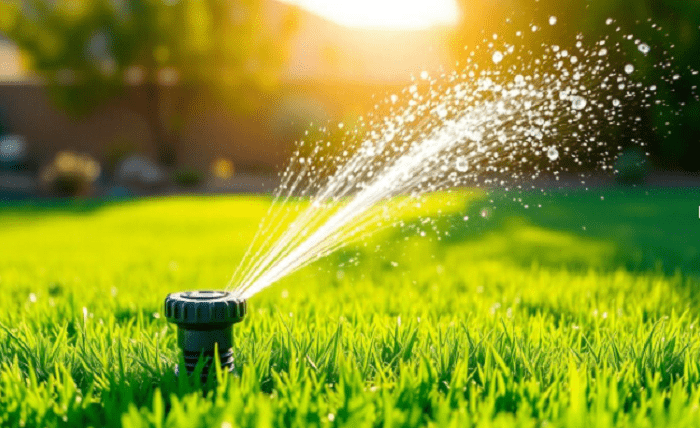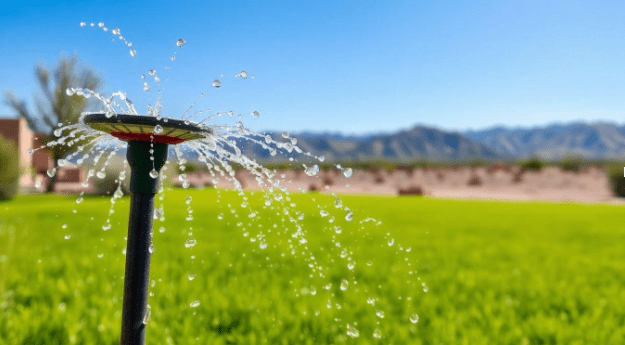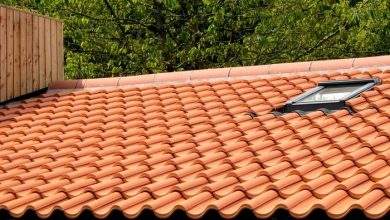
Las Vegas homeowners need to be aware of specific rules for watering their landscapes. These regulations are in place to conserve water, a precious resource in the desert. Understanding these guidelines helps avoid fines and keeps yards healthy. When irrigation systems fail, turning to reliable sprinkler repair by WaterWhitchers in Las Vegas ensures that your system runs efficiently and stays compliant with local water-use rules.
Adhering to Seasonal Watering Schedules
Watering schedules in Las Vegas change with the seasons. This means homeowners must adjust their watering habits throughout the year. The Southern Nevada Water Authority (SNWA) sets these schedules, and they are designed to match the water needs of plants while minimizing waste. For instance, during the hotter summer months, watering might be allowed more frequently than in the cooler winter months. It’s important to know your specific watering group to follow the correct days.
Navigating Watering Group Assignments
Your property is assigned to a watering group, which determines your allowed watering days. These assignments are based on your location. For example, Group A might have different watering days than Group B. Checking your assigned group is a key step in following the Las Vegas watering regulations. This system helps manage water distribution across the valley. You can usually find your group assignment on the SNWA or Las Vegas Valley Water District (LVVWD) website.
Compliance with Nevada’s Non-Functional Grass Law
Nevada has a law that restricts the use of certain types of grass. Specifically, by 2027, most non-functional grass will no longer be permitted to use Colorado River water. This law targets grass that isn’t used for recreation or aesthetic purposes in areas like medians or large, unused lawns. Homeowners should consider this when planning new landscaping or maintaining existing areas. This is a significant change aimed at long-term water conservation for the entire region.
Optimizing Sprinkler System Efficiency
Making your sprinkler system work smarter, not harder, is key to saving water in Las Vegas. It’s not just about having a system; it’s about having one that’s set up to use water as efficiently as possible. This means looking at the technology you’re using and how it delivers water to your landscape. The goal is to get the right amount of water to the right places with minimal waste. This section covers some of the best ways to achieve that.
Implementing Drip Irrigation Systems
Drip irrigation is a game-changer for water conservation. Instead of spraying water into the air where it can evaporate quickly, drip systems deliver water directly to the plant’s roots. This method is incredibly effective because it reduces water loss significantly. When you use drip irrigation, you’ll find that your plants get the moisture they need right where they need it, leading to healthier growth and less wasted water. It’s a smart choice for any Las Vegas homeowner looking to cut down on their water bill and be more environmentally friendly.
Installing Smart Irrigation Controllers
Smart irrigation controllers are like the brains of your watering system. They go beyond simple timers by using local weather data and even soil moisture sensors to adjust watering schedules automatically. This means your system won’t water when it’s raining or when the ground is already sufficiently moist. This intelligent adjustment prevents overwatering and ensures your landscape receives only the water it truly needs. By adapting to real-time conditions, these controllers help optimize water use, making them a vital tool for efficient sprinkler system operation in our desert climate.
Choosing Water-Efficient Landscaping
What you plant has a big impact on how much water your yard needs. In Las Vegas, opting for drought-tolerant plants, native species, and ground covers that don’t require a lot of water is a smart move. Replacing thirsty lawns with decorative rocks, gravel, or mulch can also drastically cut down on water consumption. This approach not only saves water but also reduces the need for frequent mowing and maintenance, freeing up your time and resources. Water-efficient landscaping is a proactive way to manage your water use and contribute to the community’s conservation goals.
Routine Sprinkler System Maintenance
Keeping your sprinkler system in good shape is key to saving water and keeping your lawn healthy. It’s not just about turning it on and off; a little regular attention goes a long way. Think of it like taking care of a car – regular check-ups prevent bigger, more expensive problems down the road. This section focuses on the hands-on tasks homeowners can do to maintain their sprinkler systems.
Regularly Inspecting Sprinkler Heads and Emitters
Sprinkler heads and emitters are the business end of your system, directly applying water to your landscape. Over time, they can get clogged with debris, damaged by lawn equipment, or simply get knocked out of alignment. A quick visual check before and after a watering cycle can catch many issues. Look for heads that are spraying unevenly, not popping up fully, or spraying water onto sidewalks and driveways instead of your lawn. For drip systems, check that emitters are delivering water and not blocked by dirt or mineral buildup. Addressing these small problems promptly stops water waste and ensures your plants get the water they need.
Checking for Leaks and Valve Issues
Leaks can be sneaky water thieves. They often happen at pipe connections or around valve boxes. You might notice unusually soggy spots in your yard, a sudden increase in your water bill, or even hear the sound of running water when the system isn’t supposed to be on. Valve issues can also cause problems, like valves that won’t shut off completely, leading to constant dripping, or valves that won’t open, resulting in dry spots. Regularly inspecting the visible parts of your system and listening for unusual sounds are good ways to spot potential leaks and valve problems before they become major issues. This proactive approach to sprinkler system maintenance is vital.
Flushing the System for Optimal Performance
Over time, sediment and mineral deposits can build up within your sprinkler system’s pipes and components. This buildup can restrict water flow, clog nozzles, and reduce the overall efficiency of your system. Flushing the system, often done by temporarily removing sprinkler heads or opening specific drain points, helps clear out this debris. It’s a good practice to flush your sprinkler system at least twice a year, typically in the spring and fall. This simple maintenance step helps maintain consistent water pressure and ensures that water is distributed evenly across your landscape, contributing to better plant health and water conservation.
Seasonal Sprinkler Care and Adjustments
Adjusting your sprinkler system with the changing seasons is key to keeping your landscape healthy and conserving water in Las Vegas. This isn’t just about setting a timer; it’s about understanding how weather impacts your plants and your system’s needs.
Winterizing Your Sprinkler System
As temperatures drop, protecting your sprinkler system from freezing is important. Water left in the pipes can expand and cause them to burst, leading to costly repairs. To winterize, the system needs to be completely drained. This usually involves shutting off the main water supply to the system and then using compressed air to blow out any remaining water from the lines and sprinkler heads. This process helps prevent damage during colder months. It’s a good idea to check your system for any obvious damage before winter sets in.
Spring Restart Procedures
When spring arrives, it’s time to bring your sprinkler system back to life. Before turning the water back on, it’s wise to inspect all the sprinkler heads for any damage or blockages that might have occurred over the winter. Slowly turn the water supply back on and check for leaks at all connections and valves. Test each zone to make sure it’s working correctly and that the water is reaching all areas as it should. This careful restart helps avoid issues later in the season.
Adjusting Watering for Fall and Winter
As the weather cools down in the fall, your landscape’s water needs decrease. You’ll want to adjust your watering schedule to reflect this. This often means watering less frequently and for shorter durations. In winter, watering should be minimal, focusing only on days when the ground is not frozen and plants show signs of stress. Following the local watering group assignments and restrictions is especially important during these cooler months to prevent overwatering and water waste. Remember, seasonal sprinkler care is an ongoing process.
Watering Best Practices for Las Vegas

Watering During Optimal Hours
Las Vegas homeowners should always aim to water their landscapes during the coolest parts of the day. This means early mornings, before the sun gets too high, or late evenings after the heat of the day has passed. Watering during these times significantly reduces water loss due to evaporation. This simple adjustment can make a big difference in water conservation. It also helps the plants absorb the water more effectively before it can evaporate into the dry desert air. Following these watering best practices is key for any Las Vegas resident.
Understanding Sprinkler Watering Durations
Knowing how long to water is just as important as knowing when. Overwatering can be just as detrimental as underwatering, leading to wasted water and unhealthy plants. For lawns, a common recommendation is to water for about 12 minutes per zone, often broken into shorter cycles to allow for better absorption. For drip irrigation systems, watering durations will be longer, but much less frequent. It’s about giving the plants what they need without excess. Understanding these durations helps in efficient watering.
Avoiding Overwatering with Drip Systems
Drip irrigation systems are fantastic for water conservation, but they still require mindful use. Because they deliver water directly to the plant’s roots, they can be very efficient. However, running them for too long can still lead to water waste and potential root rot. It’s important to follow the recommended watering schedules for drip systems, which typically involve longer watering times but fewer days per week compared to sprinklers. This approach ensures plants get adequate moisture without the soil becoming waterlogged. Proper use of drip systems is a smart watering strategy.
Professional Support for Your Irrigation Needs
When to Seek Expert Sprinkler Repair
Sometimes, even with the best intentions and regular checks, sprinkler systems can develop issues. If you notice uneven watering, low water pressure, or sprinklers that won’t turn on or off, it’s a good sign to call in the pros. Ignoring these problems can lead to wasted water and unhealthy landscaping. Don’t wait for a small leak to become a big problem.
Benefits of Reliable Sprinkler Repair in Las Vegas
When your irrigation system needs attention, choosing a reputable service like WaterWhitchers in Las Vegas makes a difference. They understand the unique challenges of desert climates and can diagnose issues quickly. Their goal is to get your system running efficiently, saving you water and money. A well-maintained sprinkler system is key to a beautiful yard without excessive water use.
Ensuring Compliance with Local Water Authorities
Las Vegas has specific watering regulations to conserve our precious water resources. Local water authorities set these rules, and staying compliant is important. Professional irrigation services are familiar with these regulations and can help ensure your sprinkler system operates within legal limits. This prevents potential fines and contributes to community-wide water conservation efforts. They can also advise on upgrades that meet current and future water-saving mandates.
Keeping Your Las Vegas Landscape Water-Wise
Taking care of your sprinkler system is a big part of saving water here in Las Vegas. It’s not just about following the watering schedules, though that’s super important. Checking your sprinklers regularly for leaks or broken heads can stop a lot of water from going to waste. Simple things like making sure the water goes on your plants and not your house, or even looking into smarter controllers, really add up. Plus, with new rules coming about grass, thinking about drought-tolerant plants now is a smart move. By staying on top of sprinkler maintenance and being mindful of how and when you water, homeowners can keep their yards looking good while doing their part for our community’s water future.




